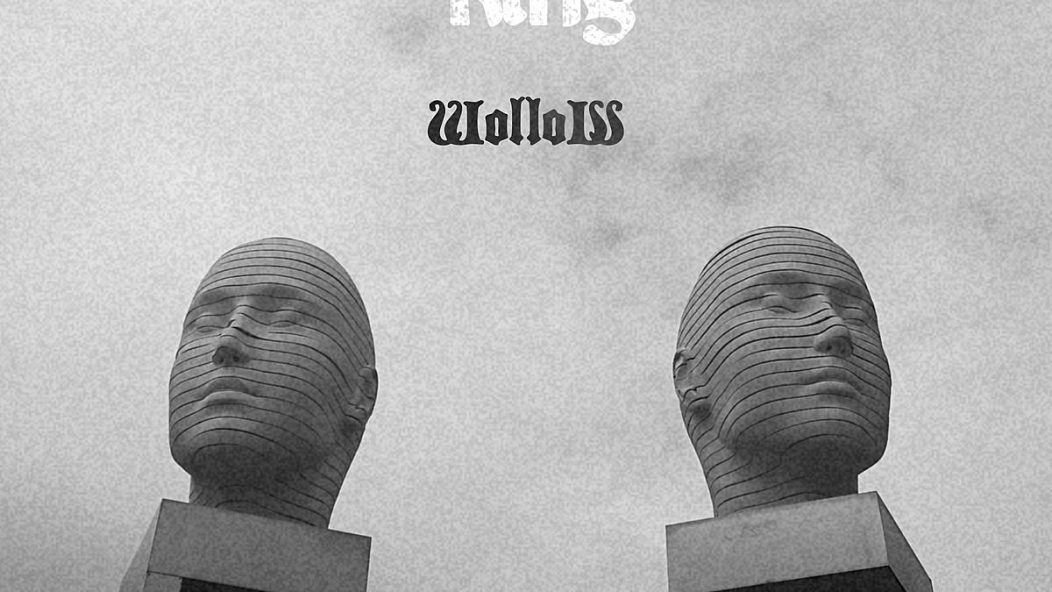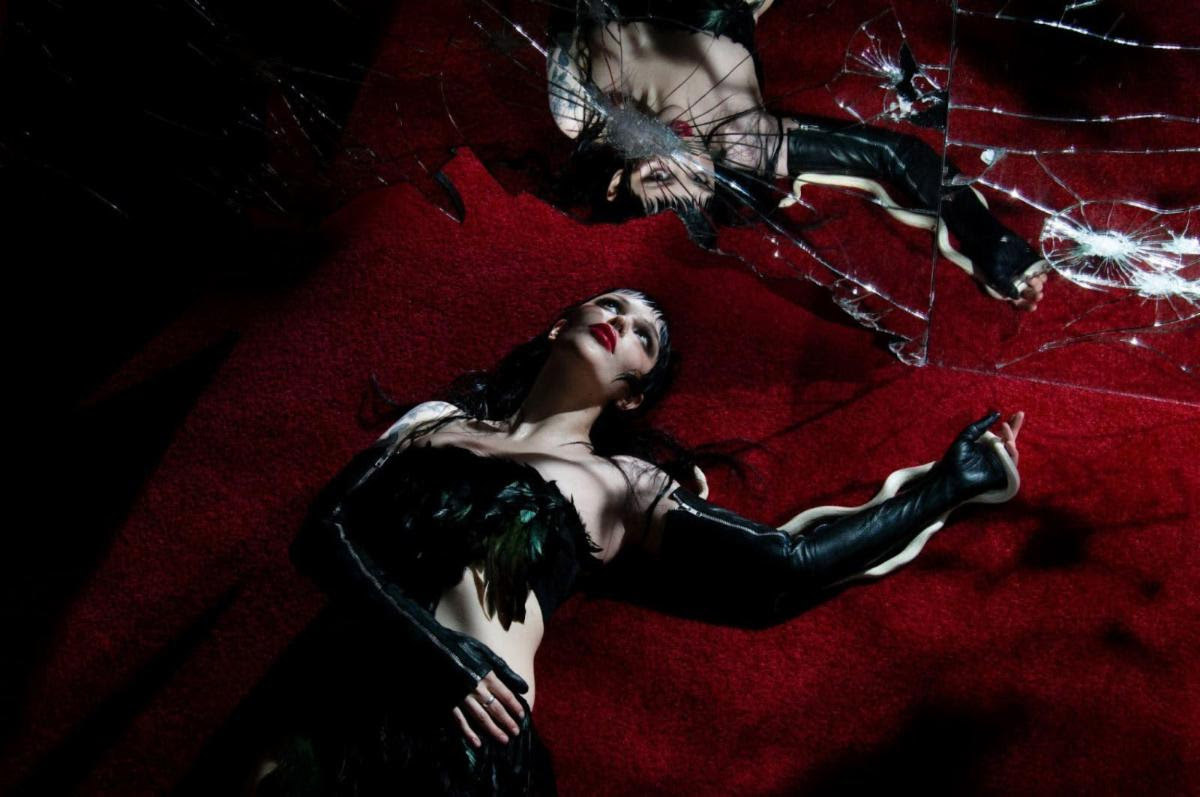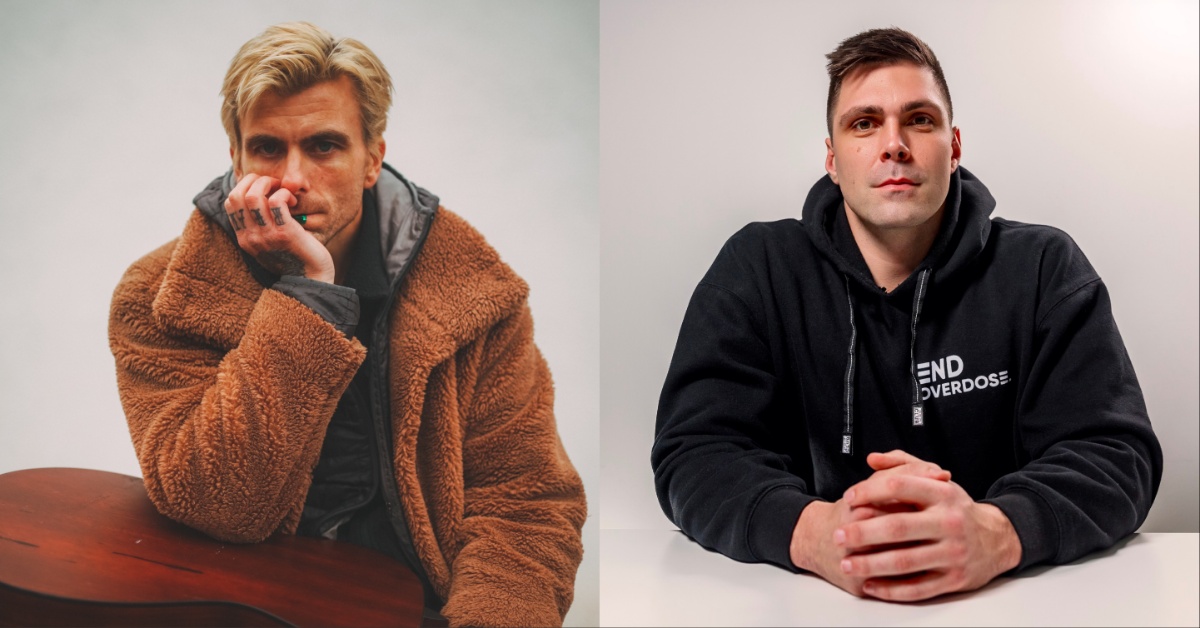
The Mountain King Slips Into a Doom Mood on "WolloW" (Early Album Stream + Interview)
When dreaming, the concept of time always seems to be entirely subjective. We revisit our pasts, invent futures, and sometimes replay certain events over and over again, discarding linear progression. It all makes sense when asleep, but upon waking, trying to process all the disparate fragments and paradoxes starts to shatter that state of suspended clarity. Upon first hearing The Mountain King‘s upcoming album WolloW, I was reminded of how it feels waking up from an incredibly realistic dream, passing through that space where reality and the imaginary are temporarily interchangeable. Combining billowing clouds of atmospheric drone textures, cosmic-scale doom and psychedelic grooves, the record is a hypnotizing foray into the spacier and weirder side of doom and drone. Listen to the full thing here before it releases on February 22nd (a date of certain significance, which we’ll get to in the interview that follows).
…
…
While I previously thought that The Mountain King’s last record The Smell of Stars and Vomit was their most out-there concept yet (briefly: man goes into space, man fuses with space suit, man becomes part of black hole), WolloW is an even bolder offering—as the title hints at, it’s a palindromic album, designed to be listened to either forwards or backwards. The song titles also reflect this, starting to mirror themselves after the midway point (and it should be noted the whole track list is therefore a palindrome itself). Rather than simply record half an album and then backmask it for the second half, though, The Mountain King founder/mastermind Eric McQueen created Wollow by interspersing forward-facing elements with backwards ones. WolloW doesn’t contain any obvious point where things start to go backwards; instead, the tone of the album gradually shifts from joyous delirium to a somber, surreal haze without any clear indication of how exactly that happened.
It’s easy to get lost in the voluminous clouds of fuzz and backtracked cymbals that permeate WolloW, and easier still to lose track of where one is in the album. At times it’s unclear whether a given sound is ‘forwards’ or ‘backwards,’ but then again, it doesn’t really matter. A steadily increasing amount of noticeably reversed sounds makes the second half of the record a little more harrowing than the first: motifs that sounded bizarre and unthreatening turn out to be harsher flipped around, emerging like sinister silhouettes from the swirling mist. The intricate mix of overlapping sounds yields dense and rewarding textures that come with no shortage of groove, either.
Discarding the novel concepts entirely, WolloW is, on its sonic merits only, a phenomenal doom/drone record that completely envelops the listener in its strange world of decadent textures and keeps them hooked with one tasty bassline after another. The album’s unusual nature and clever construction takes it to the next level, though, wrapping the immersive experience in a packaging so surreal it seems almost like fiction.
We spoke to Eric McQueen about WolloW‘s creation—read the interview below and see if you can catch all the palindromes he sneakily put into his responses.
…
WolloW is described as a palindromic album that explores the concept of time—does that mean that if I were to play it backwards, it would sound exactly the same as forwards?
Yes and no.
Yes because it’s mirrored from the middle of the 5th song, and no because the songs are written in their own process each and like the cover, it is an illusion, not a real symmetry, as we are more focused on artistic freedom than rules. That is why we think the concept works, at least for us.
Since we wrote the songs in parts that run forwards and backwards, instruments interchanging the time direction, there will be parts in the second half of the album that you didn’t hear like this before. Also the effects we used, like reverb, delay, and faded voices or guitars will have a more crucial role in this second part, since they sound like they’re announcing the segments that they were killing off in the first part of the album.
Even Jan, who did the mastering, took the reversed tracks and worked on them individually to get the best results like in every other, “normal” song.
What made you decide to explore the notion of time and create a palindromic album?
We used backwards cymbals and guitars before as fill-ins in our drone albums, but this time it was different because the curiosity of listening to a part backwards was so intense that it made me forget to sleep and made me think “Dammit, I’m mad!”. It is like it wanted to be explored, a current that took me there, kind of.
After a few tests and trying some parts, I figured if I listen to the guitar melodies and synths and learn them backwards, so that I could record the same thing again and reverse it, I would have a whole new effect.
Time is the buzzword here, because it wasn’t just reversing stuff, the most work went into thinking reverse-first about what makes sense in regards to songwriting and listenability.
How did you go about creating an album like this? Did you run into any unexpected challenges?
Yes it was in fact really challenging to get everything right and took multiple changes and crosshearing again and again, including rerecording sections [to get] “a good feeling”, but this was also the fun in this.
We wanted to go full into palindromes here and knew there was a palindromic date coming up soon about 22 months from the start of the work: 22022022 in European dd/mm/yyyy scheme which made a deadline so firm that it could only work.
Songnames, structure, vocals and also the length of the songs are palindromic, but I can’t say if we really thought of all possibilities here, without descending into Aibophobia.
The hardest work were the lyrics and vocals. While they are all palindromic too, the English language, though, has its differences between the written and the spoken word. There was I, not a native speaker, trying to build semantically uplifting and correct sentences. When you listen to the songs, you will realize that there’s a great rift between the lyrics you read and the vocals you hear. But that challenge was indeed unexpected and really intense to meet.
WolloW has a very dreamlike atmosphere, which to me seems to one-up your previous works’ surreal soundscapes. Did you have a particular sensation or mood in mind when writing WolloW?
We try to take the things from previous releases that we loved and intensify them as we drop the stuff we don’t find suitable for a new album, which requires a lot of self reflection and improvement, often means to let go of things we’ve learned and relearn. This was the case with the guitars. While we stripped down the overall number of instruments, we increased the intensity of long carried 8th melodies and 16th notes in the background that make kind of a clean drone carpet. More “ear-friendly” but also actually much more crafting as there are more melodies blending in compared to the raw drone chords of Wicked Zen for example.
To me, it is most important to reach a state of flowing through the song, which was a bit easier with WolloW than in The Smell Of Stars And Vomit.
Another experience in that matter was the work together as equals with Frank [guitars] and Jack [bass] having complete control over their recordings, so they knew it would be their say on their parts and they let themselves fall into the sound and created these beautiful tracks on their own without the concerns of a typical band discussion.
Your last full-length, The Smell of Stars and Vomit, had a pretty unusual concept too—how do you come up with themes and inspirations for The Mountain King?
I picture myself as an hourglass of thoughts. While all these grains of input, memories and experience, run through my mind, some are faster as the path keeps narrowing to a point when it is nearly unbearable for me not to try it. So I work mostly with questions like “Is this possible?” or “How will it sound?” and “Why hasn’t anyone done this?”, “Borrow or rob?”.
That is also one of the reasons for the band name and concept that hovers over all the releases: “What happens when all those thoughts, experiments and styles meet at the top of a mountain without any prejudices?”. I want to adapt, unite and combine in the most natural way possible as an artist, human and listener rather than eliminate every frequency until I have nothing left but half a minute jingle for my mobile phone – not that there are no great jingles.
Last question – what’s your favorite palindrome?
Actually it has become BONGNOB, the first track name and a rather British sounding word, that always gets me smiling or chuckling because of its layers.
Coming from the stoner doom scene with a joy in play of words connected to weed, I realized that while we’re getting older, these jokes will finally not all have aged well and most of them will be obsolete with a coming legalization. So some of the stoners from the past are going to be the bankers of tomorrow and this is what I imagine that those will become, Bongnobs.
Yet, as I was researching for WolloW, there were so many interesting and an overwhelming amount of palindromes, I started to feel like an oozy rat in a sanitary zoo. It is truly an old world, where also the second [song] title comes from. Latin had already created such a vast range of mysterious, funny and well-thought palindromes that it assured me: After thinking and speaking, making music backwards can’t be too far off either.
…
WolloW releases February 2nd, 2022 via Cursed Monk Records.











